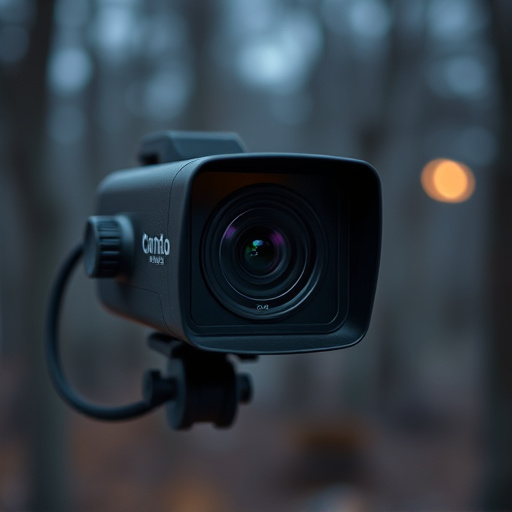Spy Camera Artificial Intelligence Integration revolutionizes covert monitoring with AI-driven facial recognition, object detection, and real-time data analysis. This technology enhances security through automated tasks, predictive threat identification, and adaptive learning, improving performance over time. Ethical considerations, legal frameworks, and transparent implementation are crucial for responsible use, balancing security and privacy in the digital age.
“Uncover the power of covert monitoring with our comprehensive guide, designed to aid professionals in implementing effective spy camera systems. Explore the fundamentals of integrating Artificial Intelligence (AI) into surveillance equipment for enhanced analytics and accuracy. From selecting the ideal AI companion to navigating ethical boundaries and legal requirements, this article offers valuable insights. Learn expert strategies for optimal system placement and discover tips to fine-tune your setup. Master the art of Spy Camera Artificial Intelligence Integration for unparalleled monitoring.”
- Spy Cameras: AI Integration Basics
- Choosing the Right AI for Monitoring
- Ethical Considerations and Legal Frameworks
- Professional Placement Strategies
- Optimizing Performance: Tips & Tricks
Spy Cameras: AI Integration Basics
Spy cameras, an integral part of covert monitoring systems, have evolved with the integration of artificial intelligence (AI). This technology enhances surveillance capabilities by enabling automated tasks such as facial recognition, object detection, and real-time data analysis. AI integration in spy cameras allows for more accurate and efficient monitoring, making it a game-changer in security solutions.
The basics of Spy Camera Artificial Intelligence Integration involve feeding the camera’s feed into AI algorithms that can interpret and analyze visual data. This process enables the system to identify specific individuals, track movements, detect unusual activities, and even predict potential threats. By leveraging machine learning techniques, these cameras can adapt to changing environments and improve their performance over time.
Choosing the Right AI for Monitoring
When designing a covert monitoring system, selecting the appropriate Artificial Intelligence (AI) for its core is paramount. The right AI acts as the brain, enabling efficient and effective data processing from spy cameras or other surveillance devices. Key factors to consider include the specific needs of your monitoring operation—whether it’s object detection, facial recognition, or behavior analysis—and ensuring the AI has been trained on relevant datasets to deliver accurate results.
Integrating Spy Camera Artificial Intelligence involves more than just technical compatibility; it requires aligning the AI’s capabilities with your system’s objectives. Cutting-edge AI models, leveraging deep learning and computer vision, offer advanced features like real-time object tracking and anomaly detection. However, the best choice is one that balances performance, scalability, and maintainability, ensuring your covert monitoring system remains robust, adaptable, and discrete.
Ethical Considerations and Legal Frameworks
In the realm of professional placement, particularly with covert monitoring systems, ethical considerations and legal frameworks play a pivotal role. The integration of spy cameras powered by artificial intelligence (AI) raises complex issues related to privacy, data protection, and consent. As AI-driven surveillance becomes more sophisticated, it’s crucial for implementers to ensure these systems are used responsibly and within the confines of the law.
Navigating this landscape demands a thorough understanding of relevant legal frameworks and ethical guidelines. Professional installers must adhere to strict regulations regarding data collection, storage, and use, ensuring that individual privacy is respected at all times. Transparency in the use of such systems can foster public trust, highlighting the delicate balance between security needs and personal liberties in today’s digital era.
Professional Placement Strategies
In today’s digital era, the integration of Spy Camera Artificial Intelligence (AI) has revolutionized professional placement strategies within covert monitoring systems. By leveraging AI algorithms, organizations can now analyze vast amounts of visual data in real-time, enhancing security measures and operational efficiency. This technology allows for proactive identification of potential threats or anomalies, ensuring a swift response.
The strategic deployment of these advanced cameras and AI solutions enables businesses to create secure environments. For instance, in retail settings, these systems can monitor customer behavior, deter theft, and improve overall store operations. In addition, the ability to remotely access and analyze footage offers flexibility and allows for informed decision-making, making professional placement a key aspect of effective security management.
Optimizing Performance: Tips & Tricks
To optimize the performance of your covert monitoring system, integrating spy camera technologies with artificial intelligence (AI) is a game-changer. AI capabilities like facial recognition and object detection can significantly enhance security by providing real-time alerts for suspicious activities or unauthorized access. By leveraging machine learning algorithms, these systems can adapt to changing environments, improving accuracy over time.
Additionally, AI integration enables efficient data analysis, allowing users to make informed decisions based on insights gathered from footage. This includes identifying patterns in behavior, detecting anomalies, and predicting potential security risks. Employing smart analytics not only ensures higher levels of safety but also streamlines operational efficiency by automating repetitive tasks, thereby freeing up human resources for more strategic surveillance needs.
The integration of Spy Camera Artificial Intelligence (AI) in monitoring systems presents a powerful tool for enhancing security, but it also demands careful consideration. By choosing the right AI for your needs and navigating ethical boundaries within legal frameworks, you can strategically place these systems to optimize performance. This guide equips professionals with essential strategies and tips to make informed decisions regarding AI-driven surveillance, ensuring both effective monitoring and compliance with evolving regulations.
